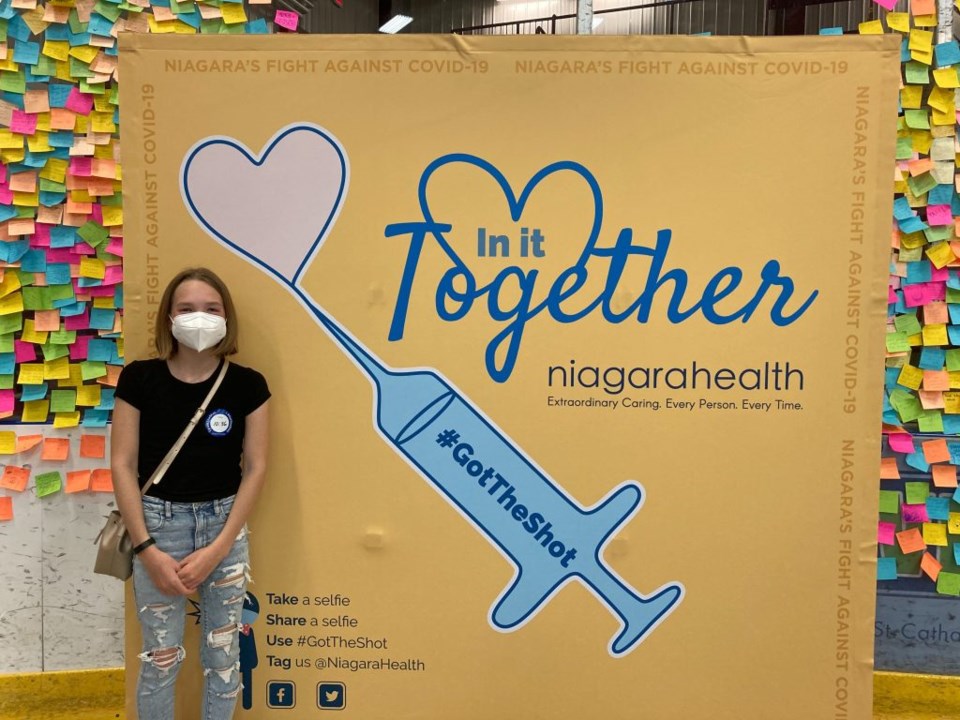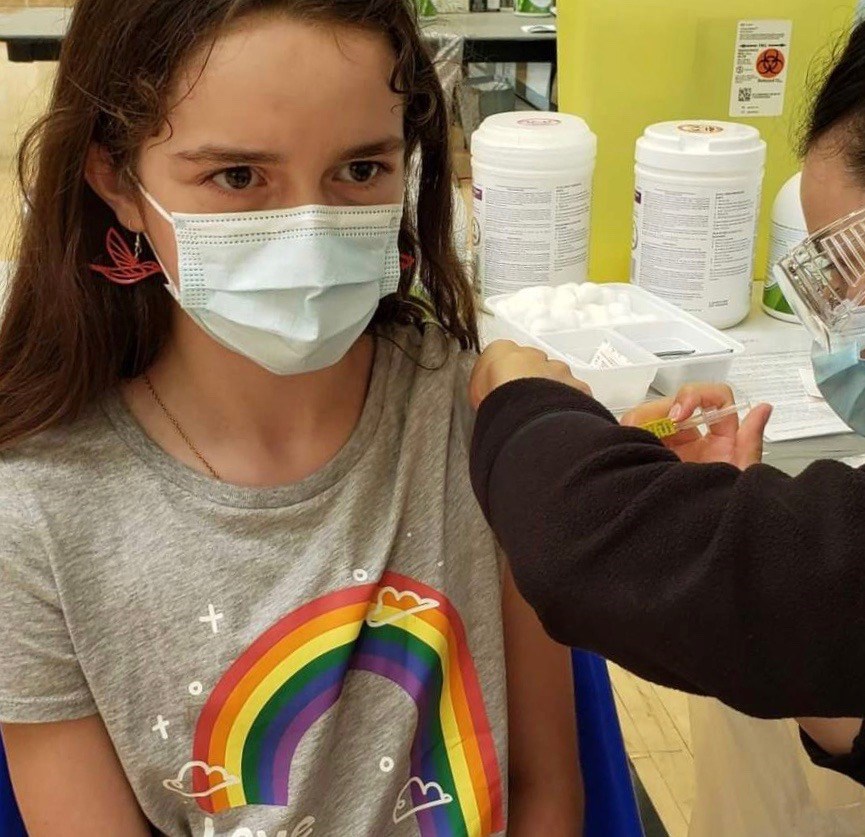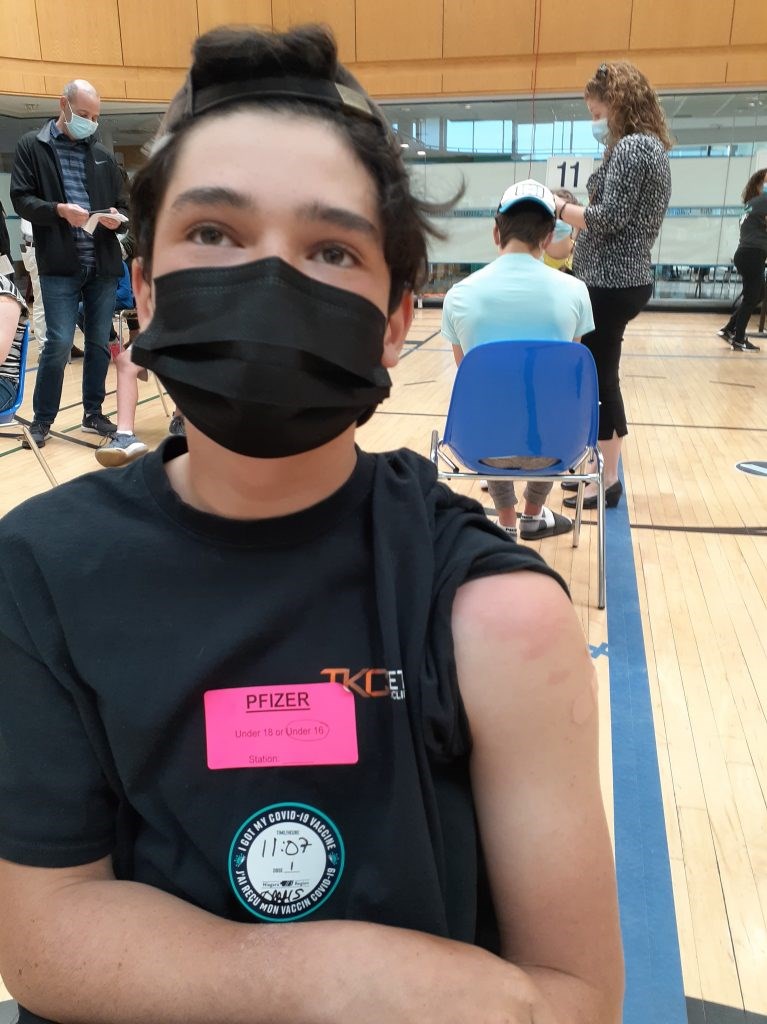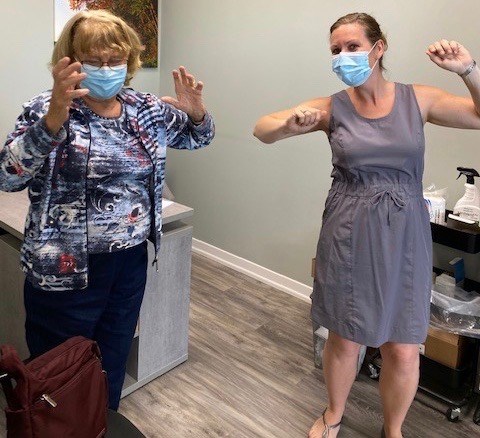
A little more than 40 per cent of those in two age groups, 12 to 17 and the 18 to 29 age group, have been vaccinated or made appointments, he says.
When eligibility for those age groups first became available, there was a good uptake of those making appointments, but that number has plateaued.
In the meantime, those in the older age groups who can now book their second appointments are doing so, and while that is good to see, Hirji says he is concerned about an apparent hesitancy among younger folks, who are now in the age groups with the most infections.

He says he doesn’t know what is causing the hesitancy for their first dose — possibly they become impatient with the booking system, or because they have to wait a couple of weeks for their appointment.
The lack of uptake might also be due to hesitancy among parents of the 12 to 17 age group, and with those 18 up to 40, because of the busy lives of those who need to get to work and make a living, Hirji suggested.
Public health has tried to offer lots of availability, he says, including youth and family-oriented clinics, “and we didn’t get much uptake on them.”
Hirji continues to stress his work about the B1617 variant, now referred to, as dictated by the World Health Organization, as the Delta variant.
He believes it may be responsible for new cases in Ontario and Niagara, although Ontario labs are not confirming numbers for that particular variant. Reporting is lagging behind both due to screening capacity, and the lengthy time it takes to do the sequencing, explained Hirji, so at the moment, the two cases known to be in Niagara date back to March and April. He is afraid there are many more than that, and that the Delta variant is known to be about 50 per cent more contagious than other variants, causing more severe illness that is more likely to end in hospital and intensive care unit admissions.
In another few weeks, the region will begin looking at data to determine where vaccination hesitancy is taking place.
He hopes that will shed some light on what is motivating that hesitancy, and how to overcome it.
He compared the initiative to the private sector which uses similar data to sell products to people, he says. “We’re going to be using that to try to understand how to influence people, and to sell them on the importance of getting vaccinated.”
Hirji had some good news about cases in the province and in Niagara, with below what they rose to between the second and third wave.
The province and region are seeing fewer new daily cases, reproductive rate has fallen below 1, and hospital and intensive care unit admissions are falling steadily.
But as the province begins to reopen, the Delta variant is “the wild card” that could throw provincial modelling out of whack, he says, fearing the variant will not keep the reproductive rate below 1, and cause some significant risk, including the ability to keep up contact tracing.
Hirji’s message this week is also to those who are experiencing mild symptoms to get tested.

The number of tests being carried out by public health has fallen significantly, he says, and that will become more of a problem during reopening, especially if numbers rise due to the variant, as he fears.
Contact tracing then becomes especially important, “and we can’t do that if people aren’t being tested.”
Hirji is basing some of his concern on what is occurring in the U.K., which Ontario has often mirrored in the past.
The U.K. came out of a third wave safely, but now is dealing with an increase due to Delta variant cases, for which it has a better screening process. It is seeing more cases particularly among young people. It is looking at the possibility of a fourth wave, and although there were further steps to reopening planned in the U.K. for the coming weeks, they are not likely to go forward, says Hirji.
There will be a family vaccination clinic at the Niagara-on-the-Lake community centre June 21.
For more information about eligibility and how to book, visit https://www.niagararegion.ca/health/covid-19/vaccination/
appointment-booking.aspx or call the provincial booking system at 1-833-943-3900.
Young Niagara residents aren’t jumping onboard with appointments for their first vaccination as quickly as Dr. Mustafa Hirji, the region’s medical officer of health, would like to see.
A little more than 40 per cent of those in two age groups, 12 to 17 and the 18 to 29 age group, have been vaccinated or made appointments, he says.
When eligibility for those age groups first became available, there was a good uptake of those making appointments, but that number has plateaued.
In the meantime, those in the older age groups who can now book their second appointments are doing so, and while that is good to see, Hirji says he is concerned about an apparent hesitancy among younger folks, who are now in the age groups with the most infections.
He says he doesn’t know what is causing the hesitancy for their first dose — possibly they become impatient with the booking system, or because they have to wait a couple of weeks for their appointment.
The lack of uptake might also be due to hesitancy among parents of the 12 to 17 age group, and with those 18 up to 40, because of the busy lives of those who need to get to work and make a living, Hirji suggested.

Public health has tried to offer lots of availability, he says, including youth and family-oriented clinics, “and we didn’t get much uptake on them.”
Hirji continues to stress his work about the B1617 variant, now referred to, as dictated by the World Health Organization, as the Delta variant.
He believes it may be responsible for new cases in Ontario and Niagara, although Ontario labs are not confirming numbers for that particular variant. Reporting is lagging behind both due to screening capacity, and the lengthy time it takes to do the sequencing, explained Hirji, so at the moment, the two cases known to be in Niagara date back to March and April. He is afraid there are many more than that, and that the Delta variant is known to be about 50 per cent more contagious than other variants, causing more severe illness that is more likely to end in hospital and intensive care unit admissions.
In another few weeks, the region will begin looking at data to determine where vaccination hesitancy is taking place.
He hopes that will shed some light on what is motivating that hesitancy, and how to overcome it.
He compared the initiative to the private sector which uses similar data to sell products to people, he says. “We’re going to be using that to try to understand how to influence people, and to sell them on the importance of getting vaccinated.”
Hirji had some good news about cases in the province and in Niagara, with below what they rose to between the second and third wave.
The province and region are seeing fewer new daily cases, reproductive rate has fallen below 1, and hospital and intensive care unit admissions are falling steadily.
But as the province begins to reopen, the Delta variant is “the wild card” that could throw provincial modelling out of whack, he says, fearing the variant will not keep the reproductive rate below 1, and cause some significant risk, including the ability to keep up contact tracing.
Hirji’s message this week is also to those who are experiencing mild symptoms to get tested.

The number of tests being carried out by public health has fallen significantly, he says, and that will become more of a problem during reopening, especially if numbers rise due to the variant, as he fears.
Contact tracing then becomes especially important, “and we can’t do that if people aren’t being tested.”
Hirji is basing some of his concern on what is occurring in the U.K., which Ontario has often mirrored in the past.
The U.K. came out of a third wave safely, but now is dealing with an increase due to Delta variant cases, for which it has a better screening process. It is seeing more cases particularly among young people. It is looking at the possibility of a fourth wave, and although there were further steps to reopening planned in the U.K. for the coming weeks, they are not likely to go forward, says Hirji.
There will be a family vaccination clinic at the Niagara-on-the-Lake community centre June 21. For more information about eligibility and how to book, visit https://www.niagararegion.ca/health/covid-19/vaccination/appointment-booking.aspx or call the provincial booking system at 1-833-943-3900.